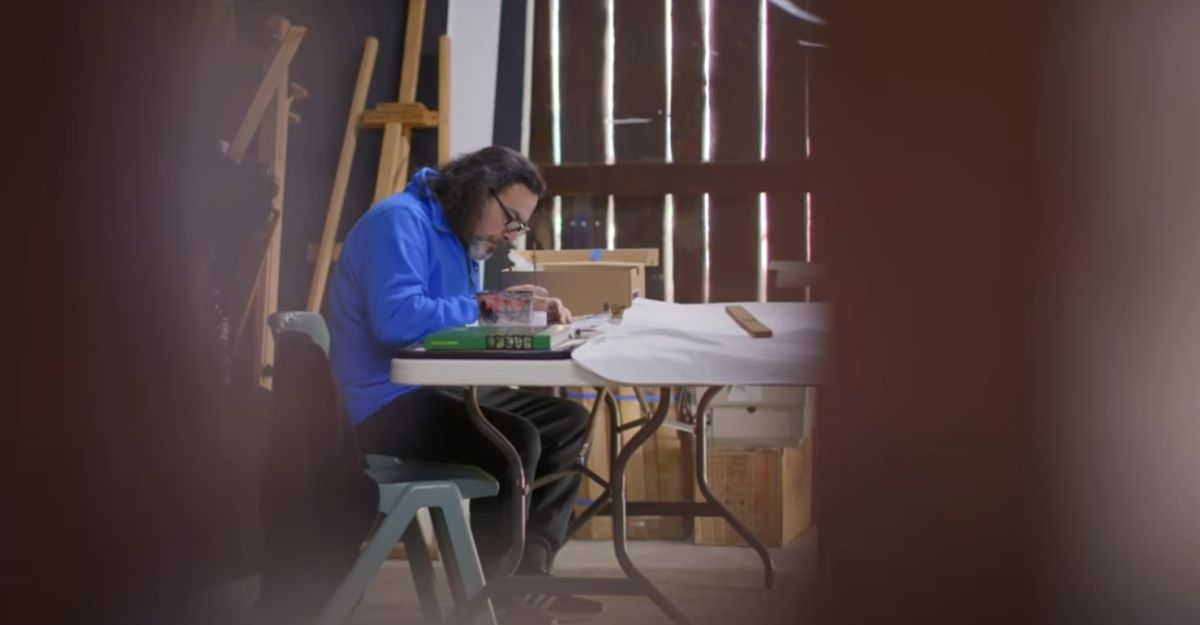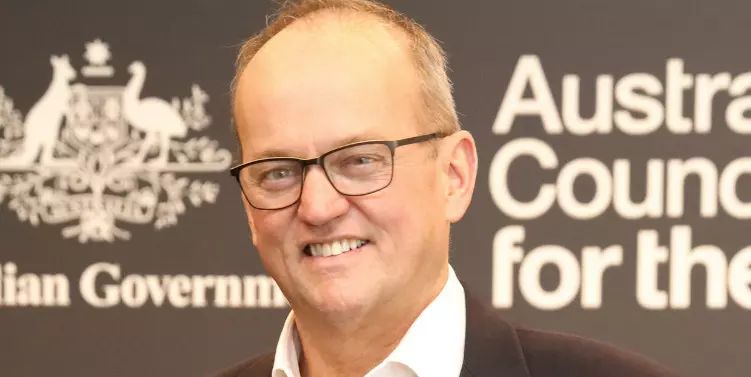For five days, the Australian representative to the 2026 Venice Biennale was to be the first ever Arab-Australian artist selected for this honour.
The decision to showcase Khaled Sabsabi’s work at this prestigious international art festival was brought to Parliamentary Question Time on February 13, 2025. That same day, the Board of Creative Australia rescinded the selection of Sabsabi and curator Michael Dagostino, stating it had “made the unanimous decision not to proceed with the artistic team chosen for the Venice Biennale”, further citing concerns that debate about the selection outcome, “could undermine our goal of bringing Australians together through art and creativity.” Revocation of this honour is unprecedented.
The problems with rescinding the decision are many-fold. There is the obvious jeopardy this puts the principle of “arms-length” funding in — in much the same way the independence of the Australian Research Council has been jeopardised by the review it was requested to undertake by Education Minister Jason Clare of Dr Randa Abdel-Fattah’s Future Fellowship.
One argument that is often mobilised in these instances is the question of what taxpayers’ money should fund, notwithstanding the purported independence of bodies qualified to make these selections. One example is the City of Melbourne’s censorship of Azlan McLennan’s installation Fifty-six at 24seven gallery, in 2004. (Not irrelevantly, this was a work critical of Israel.) These campaigns attempt to mobilise moral outrage and contend that taxpayers’ money should solely be spent to the taxpayers’ liking, or in politically neutral ways, though neither of them stand up to scrutiny. As the Northern Irish band Kneecap contended following the UK government’s decision to withhold an arts grant on the grounds that people who opposed the UK did not deserve taxpayer money: “We are paying taxes and surely we have a right to the benefit of those taxes, regardless of our political beliefs.” Kneecap ran that argument in a legal challenge, and won.
However, there is a bigger — though intertwined — principle at stake that has been under sustained assault since October 2023: that is the right to open and free criticism, and in particular the freedom to criticise Israel. We have seen widespread censorship of Palestinian voices, whose suppression creates an exclusive (and the appearance of a seemingly uncontested) space for the Zionist narrative. The Australian public is encouraged to believe that these Zionist identities are threatened, and is simultaneously discouraged from engaging in the reality of Israel’s genocide on the Palestinian people in Gaza, the rise in anti-Arab and anti-Palestinian racism, or the efforts that certain quarters of the community have made to intimidate and silence Palestinian advocates and damage their careers and opportunities. The ongoing legal saga involving Lebanese-Australian journalist Antoinette Lattouf’s dismissal from the ABC has highlighted both the disturbing power of a letter-campaign that called for her sacking; and, bizarrely enough, the broadcaster’s argument (now abandoned) that Lebanese, Middle Eastern or Arab races do not exist. Despite the seriously disturbing implications of the “Jewish Creatives” group that co-ordinated that letter-campaign, it was not these attacks on Lattouf’s livelihood but concern for the safety of the campaign’s organisers that warranted swift intervention in the eyes of the government, who rushed through anti-doxxing legislation.
Government and media alike have deflected the many serious issues at play, including government interference in the decision of independent bodies, or what speech and action is legitimate and worthy of protection, through the weaponisation of the concept of “social cohesion”. New Victorian anti-vilification legislation which now explicitly includes protection of this decidedly amorphous, and therefore easily manipulated, construct is an alarming instance of this.
The Premiers’ speech in announcing the Bill focuses on the way Jewish members of the community have felt over the last year, and affirms that Victoria’s values promise that “whoever you are, whoever you pray to — you’re’ safe and welcome here in this state.” I agree with the sentiment. But I do believe that there has been a sneaky conflation of what it means to be “safe”, and that it is actually quite reasonable, and sometimes even essential, to be made to feel uncomfortable. In this light, we should understand the recent concern for social cohesion, such as when Prime Minister Albanese called the Palestinian community’s commemoration of a year of genocide “incredibly provocative,” as just the latest iteration of how some people’s rights are made to bow at the altar of other people’s feelings.
This appeal to social cohesion is also apparent in the Board of Creative Australia’s claim that rescinding Sabsabi’s representation in the Biennale is a measure that safeguards its “goal of bringing Australians together through art and creativity.” But isn’t the assessment a merit-based process? Is Australia really saying to the world that they will be sending the second-best artist in 2026? To this point, the shortlisted artist-curator teams are concerned about the implications of the revocation, and have co-signed a letter urging the reinstatement of Sabsabi and Dagostino.
One might ask, what is art and creativity actually for? The history of art has long challenged the status quo and invited people to reflect and learn and sometimes feel uncomfortable — all the more so in an era of postcolonial and decolonial art. Art that doesn’t have something to say is precisely the sort of canvass available for ten bucks at Kmart: it might be decorative but it’s hardly art. Why should art in Australia be any different? And if it is different, what are the implications of the suppression of art and creativity for a society that claims to be democratic?
During the 2006 Lebanon War, Israel developed the ad hoc Dahiya Doctrine — named after the densely populated neighbourhood in Beirut that Israel indiscriminately bombarded. This was later applied in Israel’s 2008-9 assault on Gaza, Operation Cast Lead, as captured in the comments of Northern Command chief Major General Gadi Eisenkot, recorded in the Goldstone Report:
What happened in the Dahiya quarter of Beirut in 2006 will happen in every village from which Israel is fired on … We will apply disproportionate force on it and cause great damage and destruction there. From our standpoint, these are not civilian villages, they are military bases … This is not a recommendation. This is a plan. And it has been approved.
This marks but one instance of a strategy Israel has employed, as Eyal Weizman argued more than a decade ago in The Least of All Possible Evils, in which Gaza (particularly) has been treated as “a laboratory”, where “the thresholds … are tested and pushed: the limits of law, and the limits of violence that can be inflicted by a state and be internationally tolerated.”
One of the two artworks by Sabsabi that motivated the outrage at his selection for the Biennale, and which was cited in Question Time, was a 2007 video piece entitled You. The work, which uses fractured images of Hassan Nasrullah, the recently assassinated leader of Hezbollah, takes the opening lines of a speech Nasrullah delivered at the end of the 2006 war. According to the website of the Museum of Contemporary Art (where the work is held) the text of the speech is: “O most honourable, pure, and generous people, may God’s peace, mercy, and blessing be upon you …” The site notes that the work
is purposefully ambiguous. It plays on western fears of cultural difference … It also suggests the all-pervasiveness of the public news media, and its ability to deify or vilify, and to generate suspicion or panic …
Why wouldn’t a Lebanese migrant artist be critical of what happened in 2006? Indeed, why should we not be critical of the Dahiya doctrine as expressed, quite explicitly, by an Israeli military commander? And why wouldn’t a Lebanese migrant artist living in Australia comment on the all-pervasiveness of a public news media that constantly vilifies Arab actors? This was confirmed for instance by journalist-historian Peter Manning, whose investigation into the framing of Australian-Arabs in Sydney at the start of this century showed, both quantitatively and qualitatively, that “Arabs and Muslims … are seen as violent to the point of terrorism – especially Palestinians.”
Manning’s study was an analysis of reportage in the year before and after 11 September 2001. This happens to be the subject of Sabsabi’s other piece that has caused outrage, Thank You Very Much. This purports to be a video depicting footage from the 9/11 attack of New York’s Twin Towers. Unfortunately I can say little else about this work or its intentions, as the relevant page on Sabsabi’s website appears to have been pulled.
A lot of the coverage on Khaled Sabsabi so far has been focused exclusively on the two works raised in Question Time. For those not previously familiar with his work, one might get the impression that it’s all he’s ever done. Yet he has been practicing for decades, and has produced a substantial oeuvre grounded in community, multiculturalism, and religion. Sufism has had a vital influence on his work and its themes. This is “a mystical form of Islam that can integrate both sides of the sectarian divide” [between Sunni and Shia], and has an “ambition to transcend the conflictual circumstances of selfhood and ordinary daily life.” For such a major Australian artist, his first survey show came late. One might ask, as John Mateer has, why that was. Or how this body of work could be said to “undermine the goal of bringing Australians together.” The evidence suggests the opposite conclusion.
According to the Department of Home Affairs, “Australian values are based on freedom, respect, fairness and equality of opportunity.” These are supposedly “central to our community remaining secure, prosperous and peaceful.” The last sixteen months offer ample evidence that, to the contrary, such values apply more to some than others; and suggests that, rather than peace, the country is in pursuit of an alarming sort of quiet. Quiet will do. If only Arab-Australians would shut-up already!



